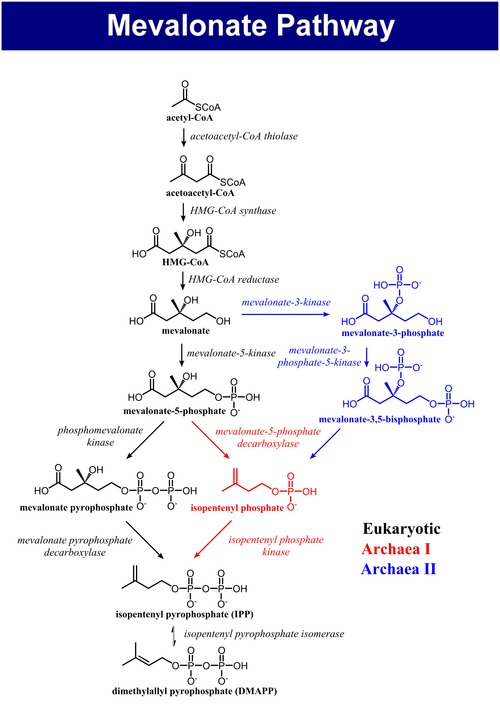
Back Ruta del mevalonat Catalan Mevalonátová dráha Czech Mevalonatvejen Danish Mevalonatweg German Vía del mevalonato Spanish Voie du mévalonate French Vía do mevalonato Galician Mevalonát útvonal Hungarian Lintasan mevalonat ID Via metabolica dell'acido mevalonico Italian

The mevalonate pathway, also known as the isoprenoid pathway or HMG-CoA reductase pathway is an essential metabolic pathway present in eukaryotes, archaea, and some bacteria.[1] The pathway produces two five-carbon building blocks called isopentenyl pyrophosphate (IPP) and dimethylallyl pyrophosphate (DMAPP), which are used to make isoprenoids, a diverse class of over 30,000 biomolecules such as cholesterol, vitamin K, coenzyme Q10, and all steroid hormones.[2]
The mevalonate pathway begins with acetyl-CoA and ends with the production of IPP and DMAPP.[3] It is best known as the target of statins, a class of cholesterol lowering drugs. Statins inhibit HMG-CoA reductase within the mevalonate pathway.